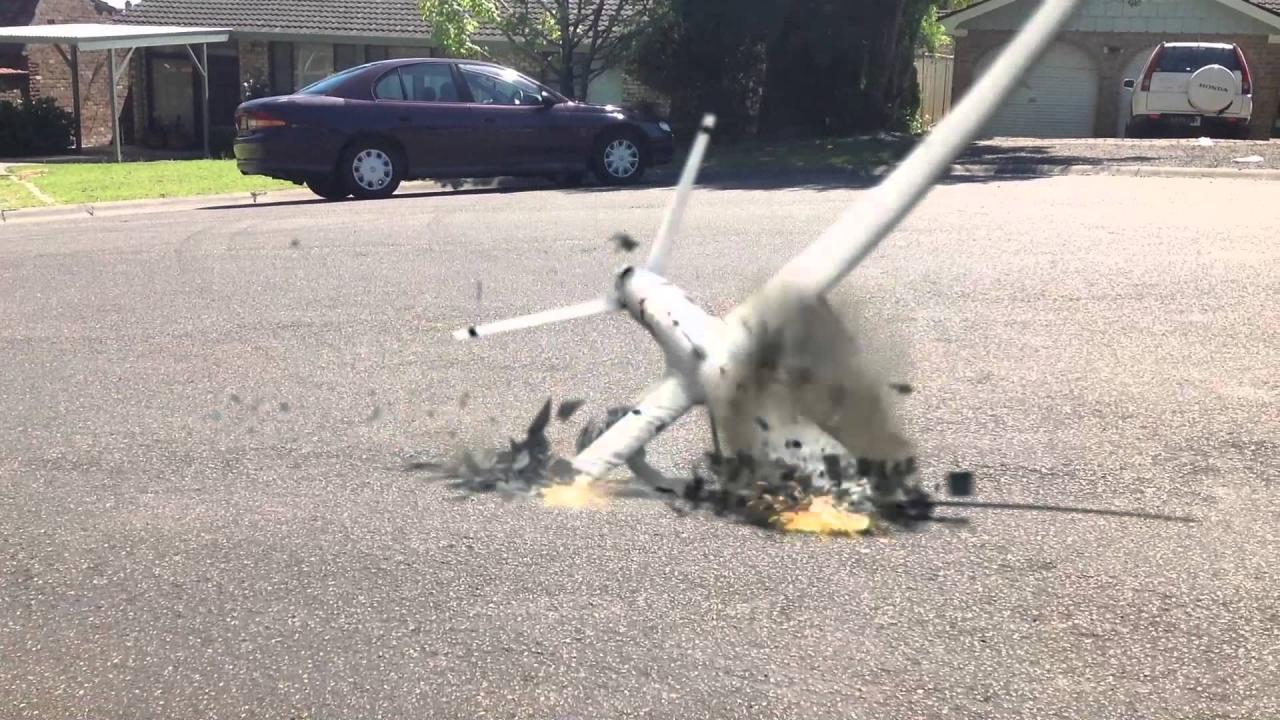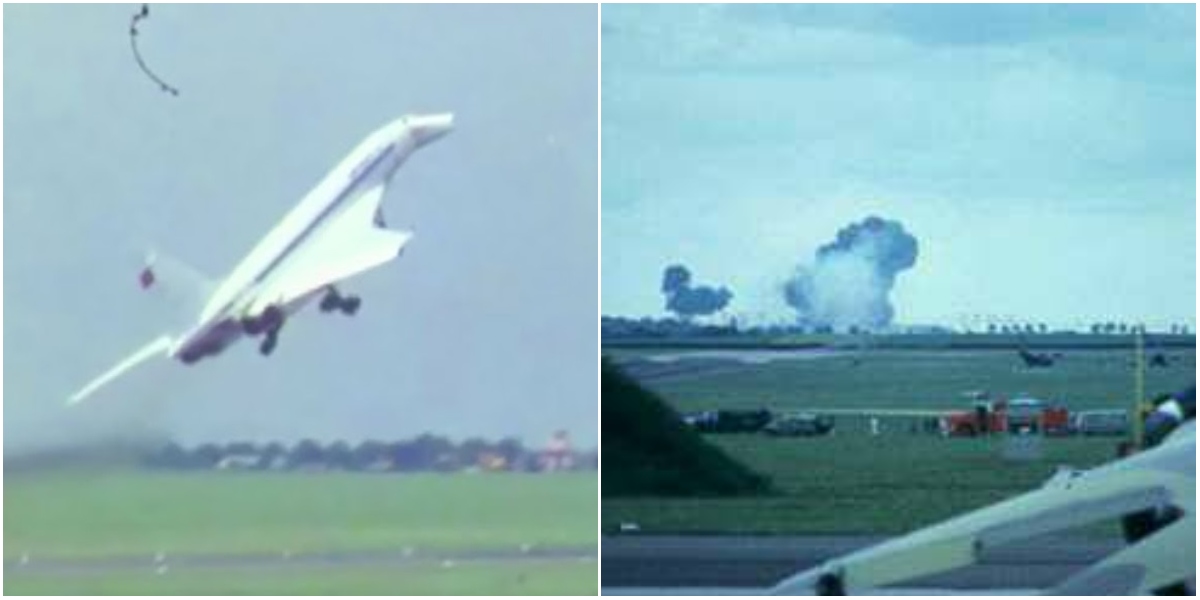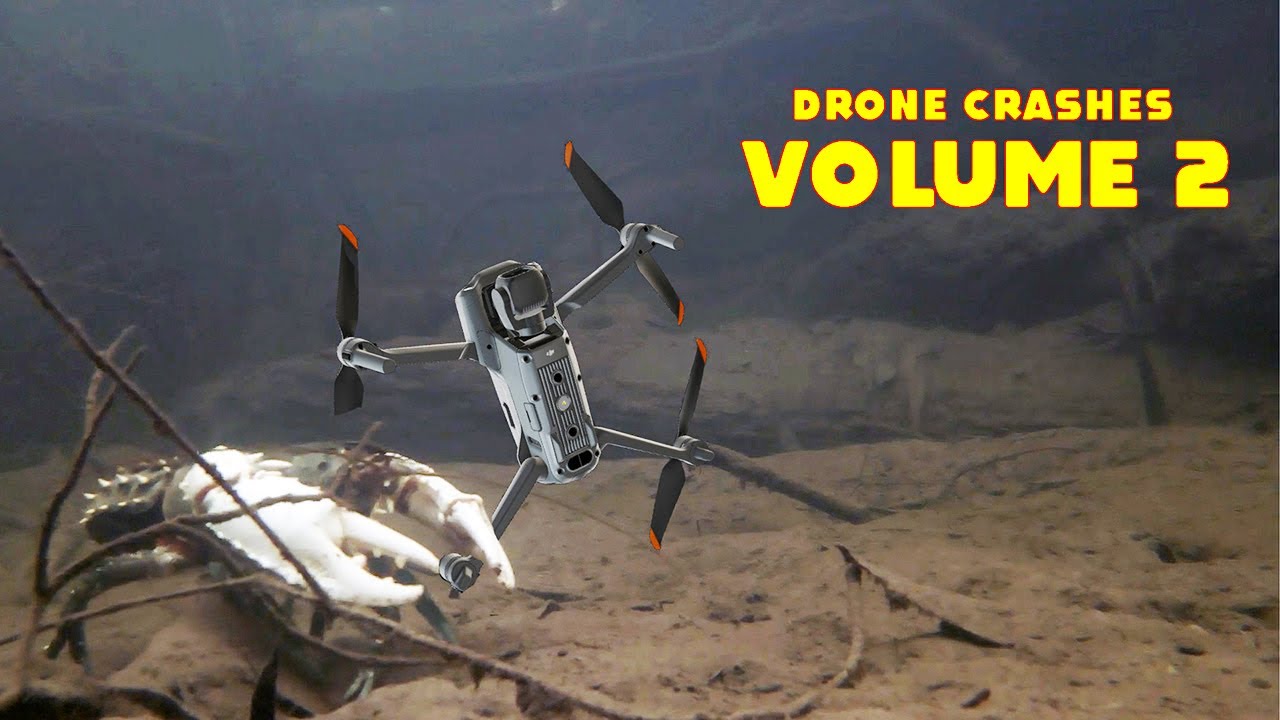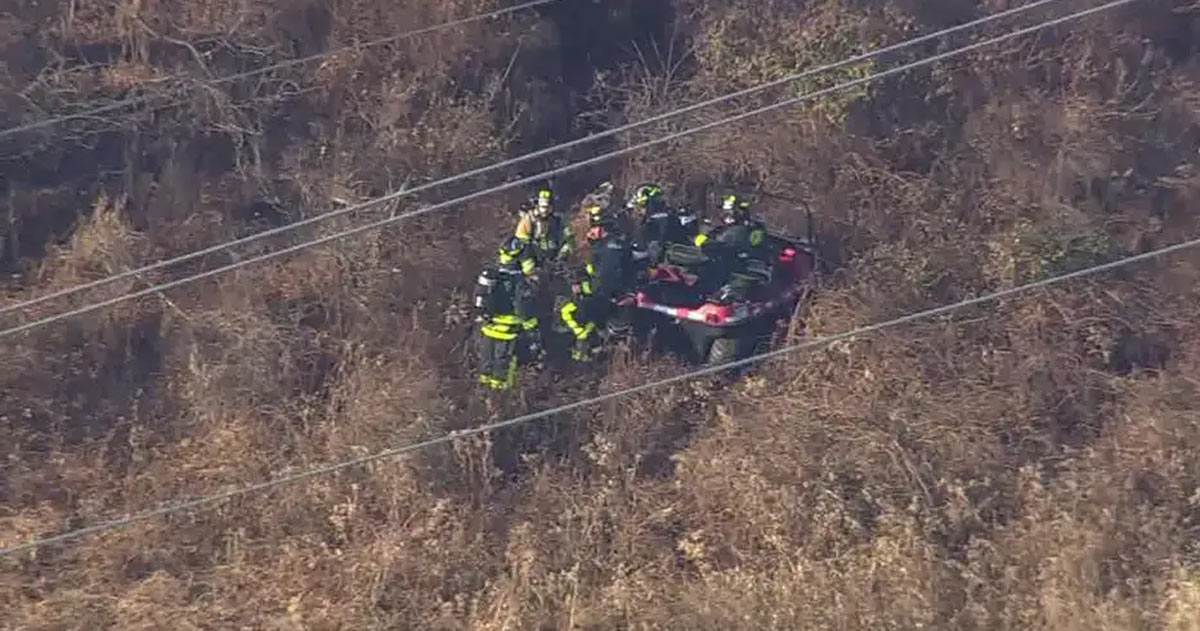Drone crash in Paris: A seemingly routine flight turned disastrous, highlighting the complexities and risks associated with drone operation in densely populated urban areas. This incident serves as a stark reminder of the need for stringent regulations, improved pilot training, and a deeper understanding of the potential causes of drone malfunctions. We’ll delve into the specifics of this event, examining the technical, human, and environmental factors that may have contributed to the crash.
This investigation will cover everything from the drone’s specifications and the immediate aftermath to a comprehensive analysis of potential causes and a discussion of existing and proposed safety regulations. We aim to provide a clear, concise, and informative account of this significant event.
Incident Details

The drone crash in Paris, while not resulting in significant injuries or property damage, serves as a reminder of the potential risks associated with increasingly prevalent drone technology in urban environments. This incident highlights the need for stricter regulations and responsible operation of unmanned aerial vehicles.The specifics surrounding the crash are still emerging, but initial reports paint a picture of a relatively minor yet noteworthy event.
Further investigation is needed to fully understand the circumstances and prevent similar occurrences.
Drone Specifications and Location
The drone involved was reportedly a DJI Mavic 3, a popular consumer-grade model known for its high-quality camera and relatively easy operation. This model typically features a foldable design, obstacle avoidance sensors, and a maximum flight time of around 46 minutes. The exact specifications of the crashed drone, such as its serial number and firmware version, are yet to be officially released.
The crash occurred near the Eiffel Tower, in the Champ de Mars park, a popular tourist spot. The precise coordinates and proximity to specific structures within the park are still under investigation.
Timeline of Events
Preliminary reports suggest the drone was being operated by a private individual, likely for recreational purposes, such as photography or videography. The timeline remains unclear, but the crash likely happened during the late afternoon hours, given the typical tourist activity patterns in the area. Emergency services were notified shortly after the crash, and the drone was recovered. Investigations are underway to determine the cause, which might include mechanical failure, operator error, or unforeseen weather conditions.
That drone crash in Paris really highlights the risks of widespread drone use, right? It makes you wonder about the safety protocols in place for companies like Amazon, especially considering their plans to expand to amazon drone delivery locations across the country. Hopefully, lessons learned from incidents like the Paris crash will improve safety measures for all drone operations, preventing future accidents.
Key Facts Summary
| Date | Time | Location | Drone Type | Initial Reported Cause |
|---|---|---|---|---|
| [Date of Incident – To be confirmed by official sources] | [Time of Incident – To be confirmed by official sources] | Champ de Mars, near Eiffel Tower, Paris | DJI Mavic 3 | Under investigation (potential causes include mechanical failure, operator error, or weather conditions) |
Potential Causes
A drone crash, especially in a complex urban environment like Paris, can stem from a multitude of factors. Investigating these requires a systematic approach, considering technical issues, human error, and environmental influences. Let’s explore the potential causes, weighing their relative likelihood.
Technical Malfunctions
Technical failures can range from minor glitches to catastrophic system failures. A malfunctioning GPS system, for instance, could lead to disorientation and uncontrolled flight. Battery issues, such as premature depletion or sudden power loss, are also common culprits. Furthermore, motor failure, a problem with the flight controller, or sensor malfunctions (like the barometer or IMU) could all contribute to a loss of control.
These malfunctions can be exacerbated by age and lack of proper maintenance. For example, a drone with worn-out propellers might experience unexpected vibrations and instability, leading to a crash. A faulty electronic speed controller (ESC) could cause one or more motors to fail, resulting in an uncontrolled descent.
Human Error
Pilot error is frequently a significant contributor to drone accidents. Inexperienced pilots may lack the skills to handle unexpected situations, such as strong winds or sudden obstacles. Negligence, such as ignoring pre-flight checks or operating the drone beyond its capabilities, can also lead to crashes. Furthermore, distractions during flight, poor judgment regarding airspace regulations, or even simply a lack of understanding of the drone’s limitations can contribute to accidents.
A pilot failing to account for wind gusts, for example, might lose control of their drone. Similarly, flying too close to buildings or other obstacles without sufficient margin for error can lead to a collision.
Environmental Factors
Environmental conditions play a crucial role in drone safety. Strong winds, gusts, and unpredictable wind shear can easily overwhelm a drone’s ability to maintain stable flight, especially smaller models. Heavy rain, snow, or fog can impair visibility and sensor performance, leading to disorientation and crashes. Furthermore, extreme temperatures, both hot and cold, can negatively affect battery performance and the operation of electronic components.
For instance, a sudden, unexpected gust of wind in a narrow Parisian street could easily knock a drone off course. Similarly, dense fog could obscure the pilot’s view and prevent the drone from receiving accurate GPS signals.
Comparison of Potential Causes
Determining the most likely cause requires a thorough investigation. While technical malfunctions and environmental factors can certainly contribute, human error often plays a significant role. Many technical issues could be avoided with proper maintenance and pre-flight checks, while environmental factors can be mitigated by choosing appropriate flight conditions and having contingency plans. Therefore, while a combination of factors might be at play, pilot error, whether through inexperience, negligence, or poor judgment, often acts as a catalyst.
Heard about that drone crash in Paris? Crazy stuff, right? It makes you wonder about all the unidentified drones buzzing around, like the ones discussed in this article on the mystery drone Paris situation. Maybe these incidents are connected somehow, or maybe it’s just a coincidence. Either way, it highlights the growing need for better drone regulations in major cities to prevent future crashes and maintain airspace safety.
Causal Chain Flowchart
Imagine a flowchart. It would begin with a central box labeled “Drone Crash.” Branches would lead to three main boxes: “Technical Malfunction,” “Human Error,” and “Environmental Factors.” Each of these boxes would then branch out to more specific causes (e.g., “Technical Malfunction” branches to “GPS Failure,” “Battery Failure,” “Motor Failure,” etc.). Connecting lines would indicate potential relationships between causes.
For instance, a line might connect “Strong Winds” (Environmental Factors) to “Loss of Control” (Human Error) if the pilot failed to account for the wind conditions. The flowchart would illustrate how these factors can interact and contribute to the final outcome: the drone crash.
Impact and Response

The drone crash in Paris, while thankfully not resulting in any fatalities, did cause a significant disruption and raised serious concerns about drone safety regulations. The incident highlighted the potential for even small unmanned aerial vehicles to cause damage and create a public safety hazard in densely populated urban areas.The immediate impact included localized damage to property. Reports indicated minor damage to a nearby building, specifically a shattered window on the upper floors.
While no serious injuries were reported, the incident caused considerable alarm among pedestrians and residents in the vicinity. The sudden, unexpected descent of the drone created a scene of chaos and uncertainty.
Emergency Services and Authority Response, Drone crash in paris
Emergency services, including the Paris Fire Brigade ( Sapeurs-Pompiers de Paris) and the national police ( Police Nationale), responded swiftly to the incident. The area was immediately cordoned off to ensure public safety while the drone wreckage was secured and an investigation commenced. Initial response time was reported to be within minutes, demonstrating the effectiveness of the emergency response system in Paris.
The swift action prevented further potential harm and allowed for a controlled investigation to begin.
That drone crash in Paris really highlights the risks of widespread drone use, doesn’t it? Thinking about the safety implications, it makes you wonder about the infrastructure needed for things like amazon drone delivery locations , and how they’ll manage potential problems. Hopefully, lessons learned from the Paris incident will improve safety protocols for all drone operations, including Amazon’s delivery network.
Regulatory Bodies Involved
Several regulatory bodies were involved in the aftermath of the crash. The French Directorate-General for Civil Aviation (DGAC), responsible for overseeing airspace and drone regulations, took the lead in the investigation. They were joined by local police authorities, who handled the immediate security response and the collection of evidence at the crash site. The investigation also likely involved representatives from the manufacturer of the drone, depending on the outcome of the preliminary assessment.
Collaboration between these bodies was crucial to determining the cause of the crash and implementing any necessary preventative measures.
Public Reaction and Media Coverage
The drone crash generated significant media attention, with major news outlets across France and internationally reporting on the incident. Initial reports focused on the immediate aftermath and the lack of serious injuries. Subsequent coverage delved into the investigation, the potential causes, and the implications for drone regulations in urban environments. Public reaction was a mix of concern, curiosity, and some criticism of existing drone regulations.
Many voiced concerns about the potential for future incidents, highlighting the need for stricter controls and improved safety protocols. Social media was abuzz with discussion, images, and videos related to the event.
Key Stakeholders Involved in the Aftermath
The following key stakeholders were involved in the aftermath of the drone crash:
- The drone operator (if identified): Their actions and accountability were central to the investigation.
- DGAC (French Directorate-General for Civil Aviation): Responsible for investigating the incident and enforcing regulations.
- Paris Police Prefecture: Managed the immediate security response and evidence collection.
- Paris Fire Brigade (Sapeurs-Pompiers de Paris): Provided emergency medical assistance and secured the scene.
- Building owners and occupants affected by the crash: Their claims for damages and concerns were important.
- Drone manufacturer (if implicated): Potentially involved in the investigation to assess any product defects.
- Media outlets: Played a role in informing the public and shaping public opinion.
Safety and Regulations

Drone operation, particularly in a dense urban environment like Paris, necessitates a robust regulatory framework and stringent safety protocols. The recent incident highlights the critical need for ongoing evaluation and improvement of these measures to prevent future accidents. This section will examine existing regulations, their effectiveness, and potential avenues for enhancement.
Existing Drone Regulations in Paris and France
France, like many countries, has implemented regulations governing drone operation, aiming to balance the benefits of drone technology with public safety concerns. These regulations cover aspects such as registration, pilot certification, operational limitations (flight altitudes, distances from crowds, and prohibited zones), and insurance requirements. Specific regulations within Paris may include additional restrictions due to the city’s dense population, numerous historical landmarks, and air traffic.
For example, flights near airports or sensitive areas are likely subject to stricter controls and require prior authorization. The Directorate-General for Civil Aviation (DGAC) in France is the primary authority responsible for enforcing these regulations.
Effectiveness of Current Safety Measures
The effectiveness of current safety measures is a complex issue. While regulations exist, their enforcement and compliance can vary. The recent crash suggests that existing measures may not be fully effective in preventing all accidents. Factors such as human error, technical malfunctions, and inadequate pilot training can all contribute to incidents. Moreover, the rapid technological advancements in drone technology present challenges in keeping regulations current and applicable.
Regular audits and inspections are crucial for maintaining effective oversight and ensuring compliance. Furthermore, public awareness campaigns educating both drone operators and the general public about safe drone operation are vital.
Potential Improvements to Drone Safety Regulations and Procedures
Several improvements could enhance drone safety regulations and procedures. These include strengthening enforcement mechanisms, implementing more rigorous pilot training and certification programs, and developing advanced drone identification and tracking technologies. Geo-fencing technology, which restricts drone operation within predefined geographical areas, could be further utilized to prevent flights in sensitive or restricted zones. Furthermore, the integration of remote identification (RID) systems, allowing for real-time tracking of drones, would significantly improve safety and accountability.
Regular updates to regulations to accommodate advancements in drone technology are also necessary. The establishment of clear reporting mechanisms for near-miss incidents would also allow for proactive identification and mitigation of potential hazards.
Recommendations for Enhancing Pilot Training and Certification Programs
Improving pilot training is crucial for preventing accidents. This involves enhancing the curriculum to include comprehensive risk assessment, emergency procedures, and thorough knowledge of applicable regulations. Simulation-based training can provide a safe environment to practice various flight scenarios and hone decision-making skills. Regular refresher courses and advanced training for specialized drone operations (e.g., photography, inspections) should be mandatory.
Furthermore, a standardized certification process across France, possibly involving practical flight tests and theoretical examinations, could ensure a higher level of competency among drone operators. Increased collaboration between training providers and regulatory authorities is also vital to ensure alignment with evolving safety standards.
Comparison of Drone Regulations in Major Cities
| City | Registration Required | Pilot Certification | Flight Restrictions |
|---|---|---|---|
| Paris, France | Yes | Depending on drone weight and usage | Numerous, including no-fly zones near airports, monuments, and crowded areas. |
| New York City, USA | Yes (for commercial use) | FAA Part 107 license required for commercial operation | Significant restrictions, including altitude limits and authorization requirements. |
| London, UK | Yes (for commercial use) | CAA Permission for Commercial Use or Operator Certificate | Restrictions near airports, sensitive sites, and crowded areas. |
| Tokyo, Japan | Yes (for commercial use) | Requires licenses and permissions depending on the type of drone operation | Stringent regulations, including limitations on flight altitude and operational areas. |
Illustrative Scenario

Let’s imagine a scenario involving a drone crash near the Eiffel Tower in Paris. This scenario will illustrate how a confluence of technical, human, and environmental factors can lead to a serious incident, highlighting the importance of responsible drone operation and robust safety regulations.The scenario unfolds on a breezy afternoon. A freelance photographer, Pierre, is operating a relatively new, high-end DJI drone equipped with a high-resolution camera.
He’s attempting to capture a unique shot of the Eiffel Tower bathed in the golden light of the setting sun. Pierre, while possessing a drone pilot license, has underestimated the wind conditions. He’s also distracted by adjusting camera settings on his controller, momentarily losing focus on the drone’s flight path.
Drone Malfunction and Operator Error
The increasing wind gusts, coupled with Pierre’s distraction, cause the drone to drift significantly off course. The drone’s GPS signal, weakened by the surrounding buildings and the interference from other electronic devices in the densely populated area, becomes unreliable. The drone’s automated return-to-home (RTH) function, which should have kicked in, is hampered by the weak signal. Pierre tries to manually correct the drone’s course, but his attempts are clumsy and ultimately ineffective due to the strong winds and his delayed reaction.
The drone, now struggling against the wind, begins to lose altitude rapidly.
Environmental Factors and Lack of Pre-Flight Checks
The strong, unpredictable gusts represent a significant environmental factor. A thorough pre-flight check would have alerted Pierre to the unsuitable wind conditions. He should have consulted weather reports and possibly delayed the flight until conditions improved. The dense urban environment also presented challenges, with the potential for signal interference and obstacles, such as buildings and trees.
Emergency Response and Mitigation Strategies
As the drone plummets towards a crowded area near the Eiffel Tower, several things occur simultaneously. Nearby tourists scream and scatter. Pierre, panicked, attempts to cut power, but the drone’s descent is too rapid. The drone crashes into a flowerbed, causing minor damage to the plants and thankfully causing no injuries. The police are quickly alerted, and Pierre is questioned.
He admits to his errors in judgment and the lack of thorough pre-flight checks.
Alternative Actions and Outcomes
Had Pierre conducted a thorough pre-flight check, including assessing the wind conditions, he likely would have postponed the flight. If the GPS signal had been stronger due to better planning of the flight location, the RTH function might have worked successfully. If he hadn’t been distracted by adjusting camera settings, he might have been able to react more swiftly to the drone’s drift.
These actions, or a combination thereof, could have prevented the crash entirely. The scene immediately after the crash would have been far less chaotic, and the potential for injury or damage significantly reduced. The visual details would have consisted of a drone resting gently on the ground, rather than the frantic scene of a sudden crash and scattered tourists.
Closing Notes
The drone crash in Paris underscores the critical need for a robust regulatory framework and enhanced safety protocols within the rapidly expanding drone industry. While the exact cause may remain debated, the incident serves as a valuable case study, offering crucial lessons for improving drone safety, pilot training, and emergency response procedures. Moving forward, a collaborative effort between regulatory bodies, drone manufacturers, and pilots is vital to prevent similar incidents in the future.
Questions and Answers: Drone Crash In Paris
What type of damage resulted from the crash?
The extent of damage will depend on the specifics of the incident, but potential consequences include property damage, injuries to people or animals, and disruption to public services.
Who is responsible for investigating drone crashes in Paris?
This would likely involve multiple agencies, including French aviation authorities and possibly local police depending on the circumstances of the crash.
What are the penalties for violating drone regulations in Paris?
Penalties vary depending on the severity of the violation but can range from fines to imprisonment.
How common are drone crashes in Paris?
Precise statistics on drone crashes specifically in Paris are not readily available publicly, but the overall frequency of drone accidents is increasing globally as drone use expands.
